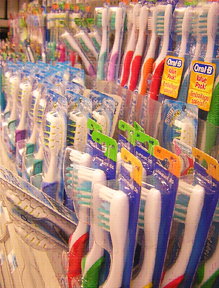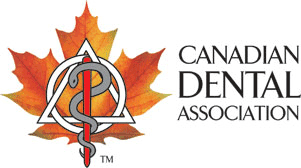
If you go to any supermarket or drugstore, you will probably find entire shelves filled with different types of products that can be used to improve your oral health care, from mouthwash to toothpaste, all with its own unique benefits. However the key to good oral health care all begins with a quality toothbrush suitable to your specific needs. Long stems, thick handles, hard bristles, round edges...where to start? With so many options how do you know which option is right for you?
Soft/Rounded Bristles
Look for soft bristles, they are easier on your gums. Hard bristles and hard brushing can wear away your enamel, make your gums
recede, and damage the roots of your teeth which can lead to more serious issues like periodontal disease.
If you brush aggressively, consider talking to your dentist or dental hygeniest about proper brushing technique during your next visit.
Small Head
The head of the brush (where you place the toothpaste) should be small so you can maneuver it in tight places and into the back of your mouth. A
½ inch wide head is a good size.
Tongue cleaner
While brushing, many people focus on their teeth and neglect brushing their tongue.
Many brushes come with a tongue cleaner on the back of the head, which you can use to remove any bacterial buildup on your tongue. Forgetting to
brush your tongue can lead to bad breath or even halitosis so make sure to add this to your routine.
Handle
Pick what feels best in your hand. It should also be long enough that you can reach the back of your mouth and other nooks and crannies. Other
options available are non-slip grip, flexible, or angled handles: all of which are your personal preference. A larger non-slip handle may be
beneficial if you suffer from arthritis. Flexible handles move with the contour of your mouth and decrease aggressive brushing. Angled handles
can increase access to difficult to reach parts.
Manual or electric
If you suffer from arthritis or other mobility ailments, an electric toothbrush can assist you with the necessary motion for brushing, which
otherwise might be too difficult. Studies have been conducted comparing manual and electric brushes and, for the most part, there’s no
definitive evidence to show the superiority of one over the other (Source link). While electric toothbrushes are certainly more expensive, many come with neat features like timers to
make sure you brush for the full recommended 2 minutes.
If you’ve been using the same brush for over three months or you’ve recently gotten over an infection, we recommend picking up a new brush the
next time you’re out. And with these tips, you’ll have no problem picking the one that's right for you! If you have any questions or want to discuss which toothbrush would be right for your individual needs, make sure to ask your dentist or dental hygienist during your next visit.
Our fees are based on the most current Ontario Dental Association fee guide for General Practitioners for general dental services and the most current Ontario Dental Association fee guide for Specialists for specialty dental services.
Click here for more information.
At Kaydental, we believe that a fair fee is one of the key features in building a strong patient-doctor relationship. At our North York dental office, we follow the suggested fee guide for General Practitioners from the Ontario Dental Association (ODA) in order to maintain pricing stability and keep patients in the know about the price of every service and product they pay for.
If you have any questions about the costs of any of our dental services, please contact us so one of our staff members can clarify and guide you through the price determinations.






